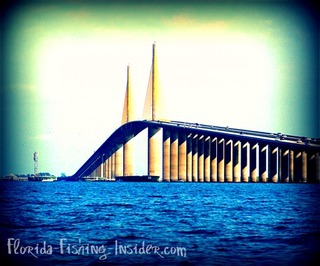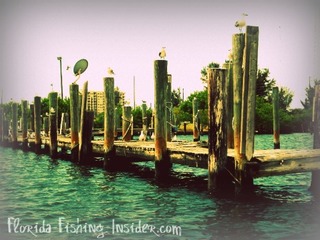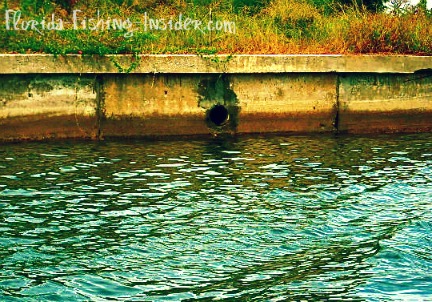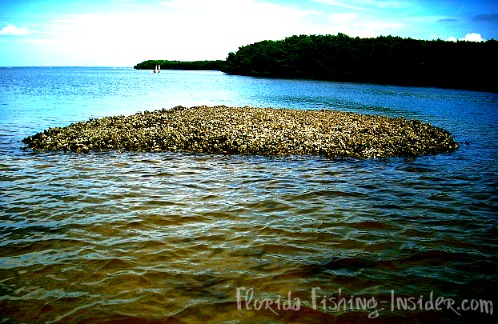Fishing Structure
Fishing structure and knowing how fish relate to it can highly increase your chances of catching them. The reason fish hang around structure is because bait usually accumulates around it, structure offers protection from dolphins and other larger fish, and to use the structure to keep them out of the current so they can use the structure to hide behind so they can effectively ambush their prey.
Structure is everywhere in one form or another, whether it's man made or natural. When going fishing you need to focus your day on fishing structure, as it can be vital to having a successful day of fishing.
Here is a list of common structures and how to fish them:
Fishing Structure; Bridges
There are many ways to fish a bridge. It all depends what species of fish you are after. Here are some basics on bridge fishing;
Usually bridge fishing, you are drifting baits through the bridge, free lined or with a split shot, or you are anchored and fishing the bottom near one of the pilings or shadow line.
If I am free lining baits through a bridge I anchor up current of the bridge and let my baits drift back naturally by opening the bail on my reel occasionally and letting line out slowly so my bait drifts with the current.
When the current is really moving fast and my bait is wanting to stay on the water surface, I add a size 00 split shot 2'-4' up from the hook on my leader. This way it gets my bait back down in the strike zone.
I let my bait drift back until I think it is on the down current side of the bridge then I reel in and repeat the process.
If you are bottom fishing on a shadow line or near a piling I like to start with around a 2oz swivel sinker or a heavy jig for artificial. The size of your swivel sinker can vary depending on the water depth and the amount of current flowing.
The way I rig my live bait bridge setup is with a swivel sinker, one end tied to my main line and one tied to my leader, my leader is 2'- 3' long with a circle hook. When using this setup try to place your bait near a piling or shadow line as this will produce the best results.
Fishing Structure; Grass and Potholes
The two most common sea grasses in Florida are spartina grass and turtle grass.
Spartina grass is found around the edge of the coastal marshes in northern Florida and Georgia.
Turtle grass is the grass you see on the bottom underwater, with a wider, ribbon like blade than what the spartina grass has and is common throughout Florida.
Sea grass offers protection for shrimp, minnows, mullet and other small organisms. The larger predator fish use Sea grass, potholes and grass edges to ambush their prey.
Fishing potholes on low tide can be very productive but don't overlook them on high tide as they can also hold many fish. When looking for an area to fish look for one with a lot of grass with many potholes. Weedless jerk baits, spoons or a good placed cast with live or dead bait are great ways to fish these kind of areas.
When using artificial baits while fishing potholes, try to concentrate on the edges of the holes as this is where the larger fish will be expecting their next meal to arrive from.
If you are using live or dead bait make sure to cast your bait past your intended pothole and slowly drag your bait back into it.
Fishing Structure; Docks and Seawalls
Docks can hold many species of fish. Keep in mind that all docks do not have fish under them. Look for a dock that has been there for awhile, as newer docks do not have the buildup of barnacles and other micro organisms growing on them yet.
Watch your depth finder and look for a dock with some depth change or close to a channel with deeper water. At night look for docks with lights, as these attract bait which in return attracts the predatory fish.
For dock fishing a trolling motor is essential as it allows you to maneuver around the dock without running your outboard motor and spooking the fish.
My favorite artificial lures are plugs and jigs when dock fishing. If you are using natural bait, tail hook or nose hook your bait as this will allow you to have more accurate placement on your cast.
Don't pass up the sea walls as these can be very productive at times. Look for corners or bends in the sea wall that cause breaks in the current.
Also look for drainage pipes that come out of the sea wall, these sometimes have a washout from draining into the canal, creek or river and fish will hold in these places.
Sea walls can be surrounded by deep water or shallow water but regardless I like to cast parallel with them, but be careful of the barnacles, they are very sharp and will cut you off in a hurry.
A variety of baits and lures work good for this, live bait, jigs, spoons or plugs.
Fishing Structure; Natural and Artificial Reefs
When fishing structure, whether it be a natural or artificial reef, they can be ideal places to locate many species of fish. Reefs offer protection in open water and allows fish to hide behind it to get a break from the current and wait for food.
There are many species of fish that could be on any reef. Some hide in the reef, as others prowl the edges in search for food.
When fishing a reef in deeper water, a floating marker is very important as this gives you a visual reference for anchoring your boat in the right place. When using a floating marker you want to use a heavy weight to get it down fast to minimize the effect of the wind and current.
Anchor slightly up current of the reef so your bait can drift back to the reef. Some of the most common rigs used when fishing reefs are a knocker rig or a fish finder rig.
The most productive way to fish reefs are with live or dead bait, but some jigs and lipped plugs work well also. Keep in mind when fishing reefs you can get hung up very easily, so the best way to help prevent this is by letting your bait hit bottom and reel up 1-2 turns of the reel. This will allow your bait to be slightly above the reef but well in the strike zone.
Fishing Structure; Oyster Bars
Oyster bars are mother natures way of providing a buffet for many game fish. They provide worms, crabs, shrimp and other food items that live among the oysters.
These are great places to find redfish, snook, trout, sheepshead and other occasional species. The best way to fish oyster bars is to work the muddy edges of the bar, avoiding the top of the oysters as it is very easy to get stuck or broke off.
The best baits to use around these areas are spoons, jerk baits, plugs and live or dead bait.
Fishing Structure; Sandbars
Sandbars are made from the wind, waves and current. These offer great fishing opportunities for the land based fisherman. Sandbars act as a type of ledge or drop off that fish cruise parallel with looking for food to be swept over the top of the bar.
Most of the time a sandbar has a shallow side and a deeper side. On low tide concentrate on the deeper side of the bar. Sandbars can hold a variety of fish species; Tarpon, Snook, Redfish, Trout, Mackerel, Whiting, Pompano and the list goes on.
When fishing a sandbar cast parallel and up current working the ledge of the bar. Don't forget to make some long cast straight out, sometimes there will be larger fish lurking just off the edge.
There are many techniques to fishing structure. Look your favorite area over, find the structure and your catch rate is sure to increase.
Return to Florida Fishing Insider Home page



